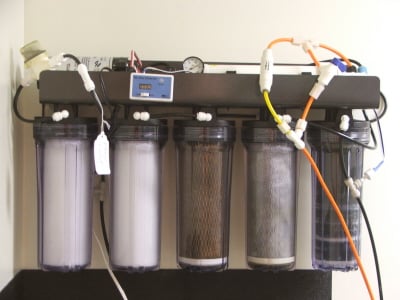acrylic51
Active Member
cont......
Both thermal circuit breakers and OFCIs are required to prevent fire ignition from excess current.
High line-voltage creates excess power and heat in utilization devices such as heaters, light bulbs, appliances, motors, and electronics. In extreme cases, this heat can ignite fires. One extreme source of high line voltage occurs from a neutral path opening within a two-leg 120 V residential electrical system. When a neutral wire breaks or opens, the utilization voltage can almost double to over 200 V with large leg-to-leg load imbalances. This extreme situation can result in almost four times the power and heat in loads. With such overheating, some loads can reach self-ignition temperature in less than 10 minutes. Power fault circuit interrupters (PFCIs) are designed to prevent fires caused by excess voltage across loads. Voltage-trip circuit breakers detect excess line voltages, but are unable to detect sub-circuit open neutral conditions.
Low line voltage can cause electro-mechanical relays (on-off switches) to repeatedly turn off (relay opens) and on (relay closes again). If current is flowing through the load contacts, it will cause arcing across the contacts when they open. The arcing can oxidize, pit and melt the contacts. This process can increase the contact resistance, superheat the relay and lead to fires. Power fault circuit interrupters are designed to prevent fires from low voltage across loads.
[edit] Interference with power line networking
AFCIs may interfere with the operation of some power line communication technologies.
Both thermal circuit breakers and OFCIs are required to prevent fire ignition from excess current.
High line-voltage creates excess power and heat in utilization devices such as heaters, light bulbs, appliances, motors, and electronics. In extreme cases, this heat can ignite fires. One extreme source of high line voltage occurs from a neutral path opening within a two-leg 120 V residential electrical system. When a neutral wire breaks or opens, the utilization voltage can almost double to over 200 V with large leg-to-leg load imbalances. This extreme situation can result in almost four times the power and heat in loads. With such overheating, some loads can reach self-ignition temperature in less than 10 minutes. Power fault circuit interrupters (PFCIs) are designed to prevent fires caused by excess voltage across loads. Voltage-trip circuit breakers detect excess line voltages, but are unable to detect sub-circuit open neutral conditions.
Low line voltage can cause electro-mechanical relays (on-off switches) to repeatedly turn off (relay opens) and on (relay closes again). If current is flowing through the load contacts, it will cause arcing across the contacts when they open. The arcing can oxidize, pit and melt the contacts. This process can increase the contact resistance, superheat the relay and lead to fires. Power fault circuit interrupters are designed to prevent fires from low voltage across loads.
[edit] Interference with power line networking
AFCIs may interfere with the operation of some power line communication technologies.

























